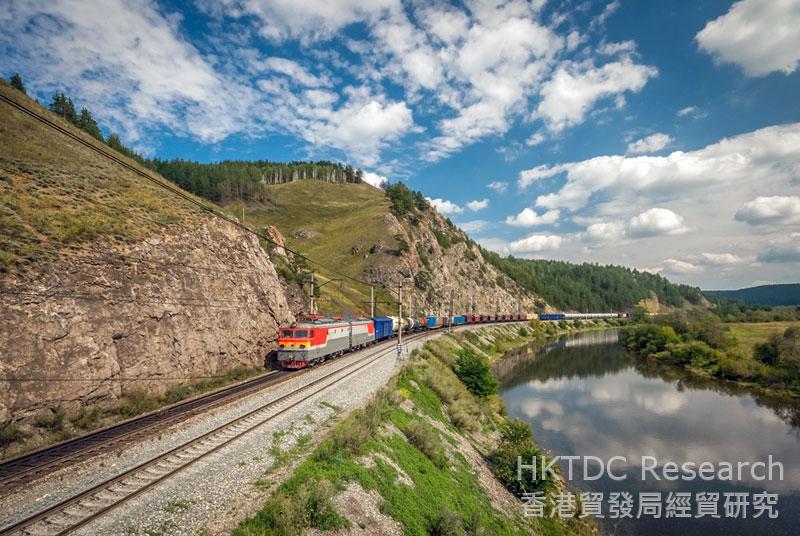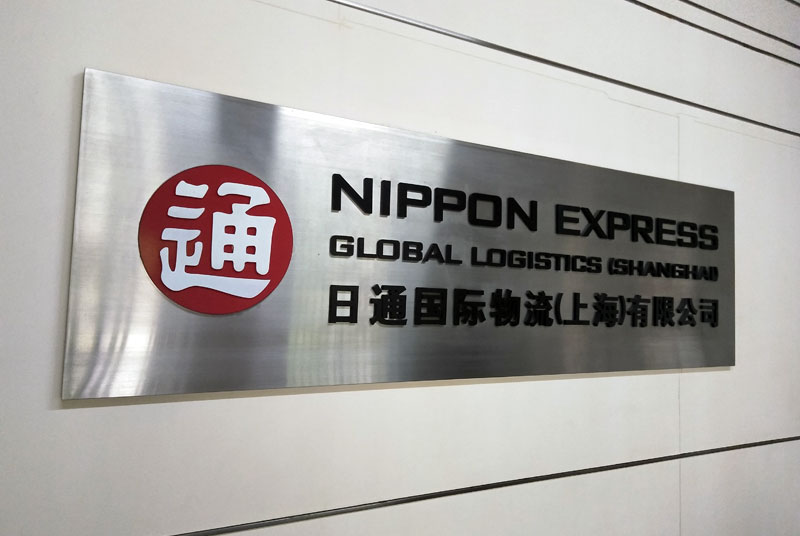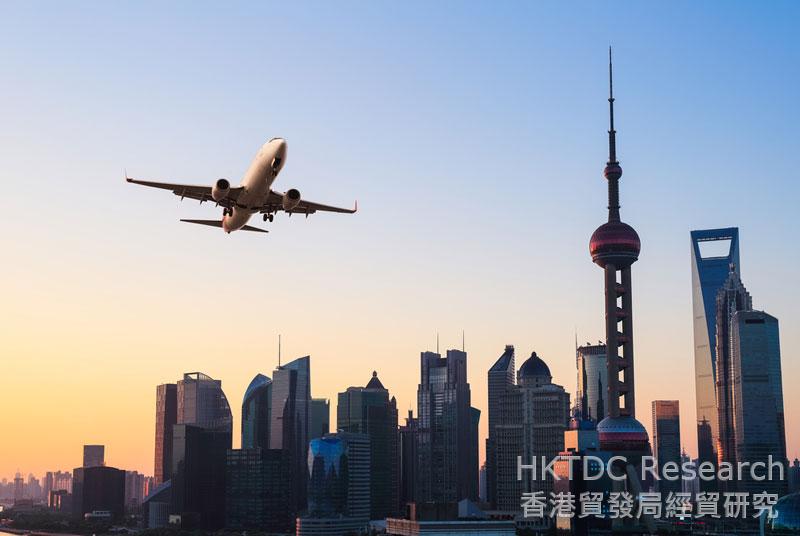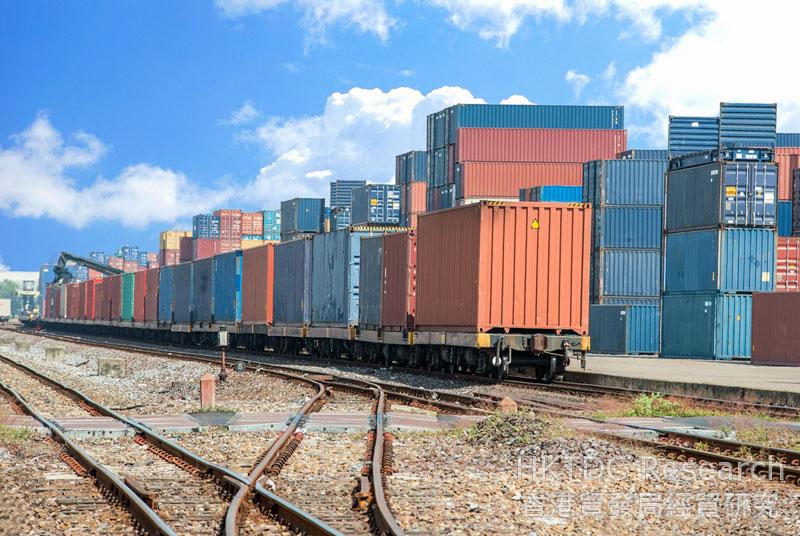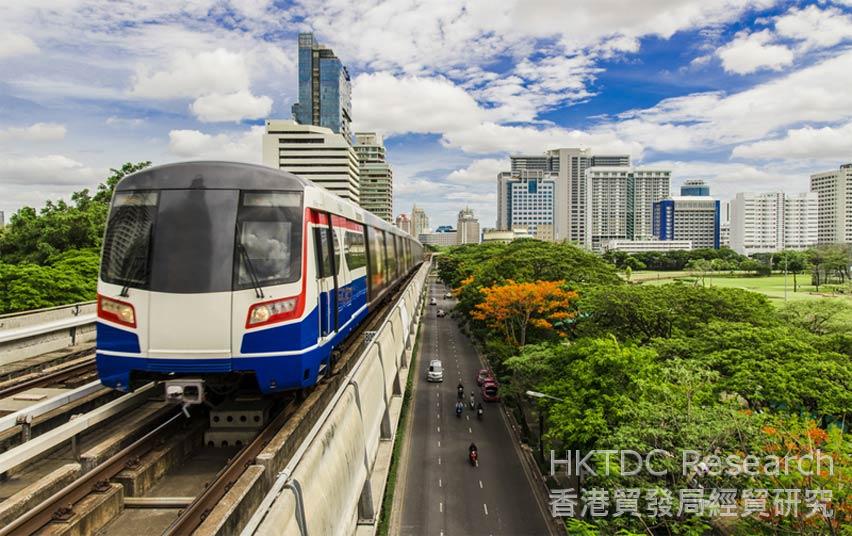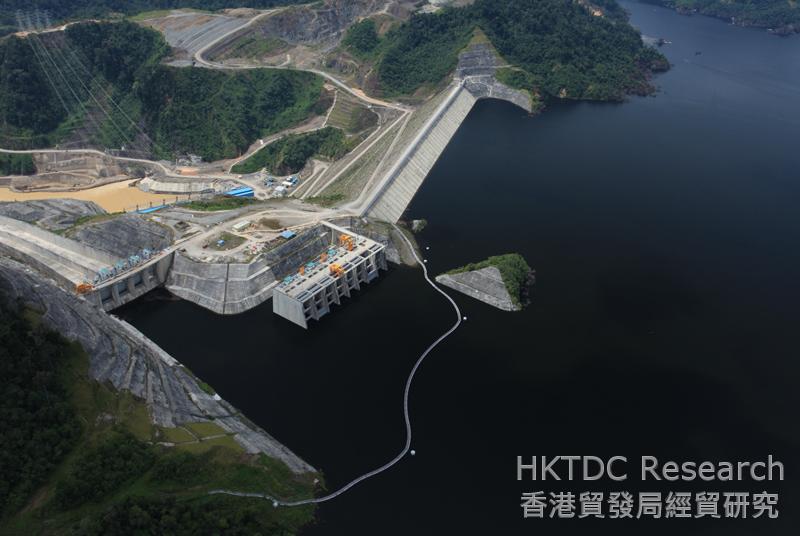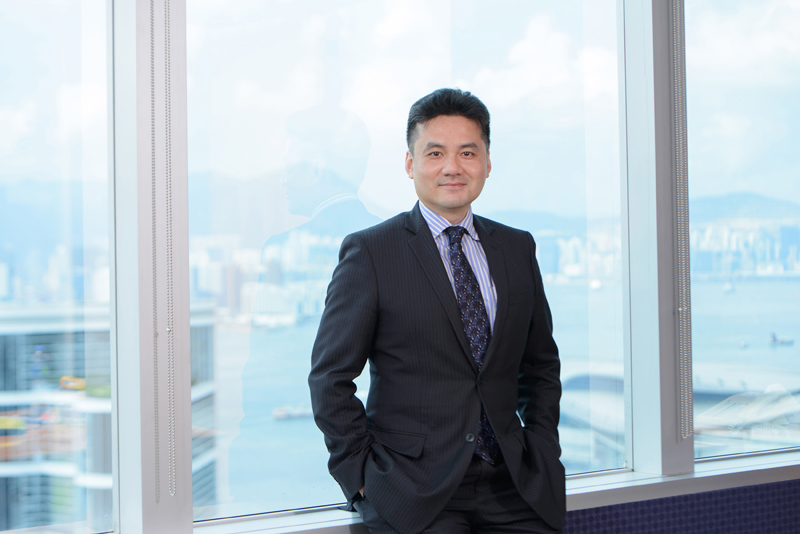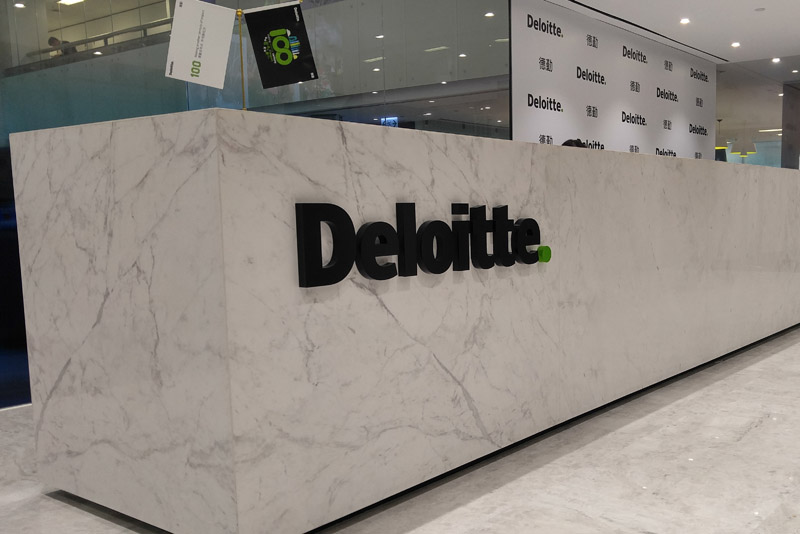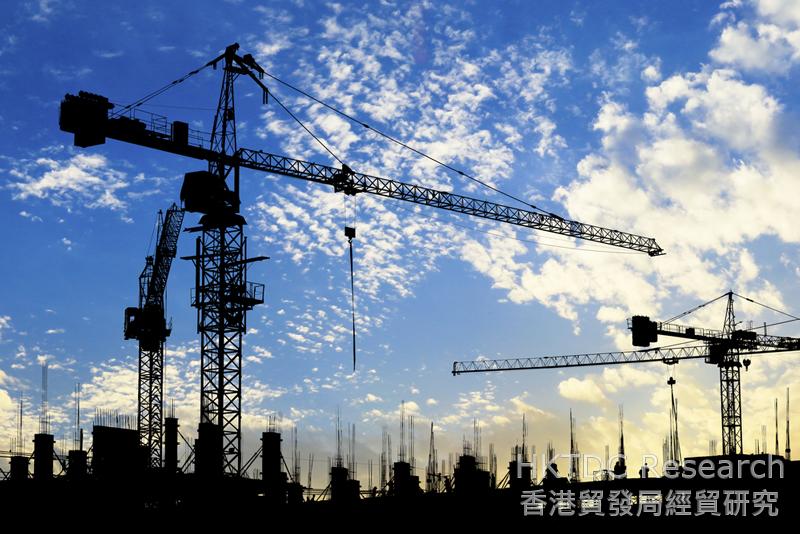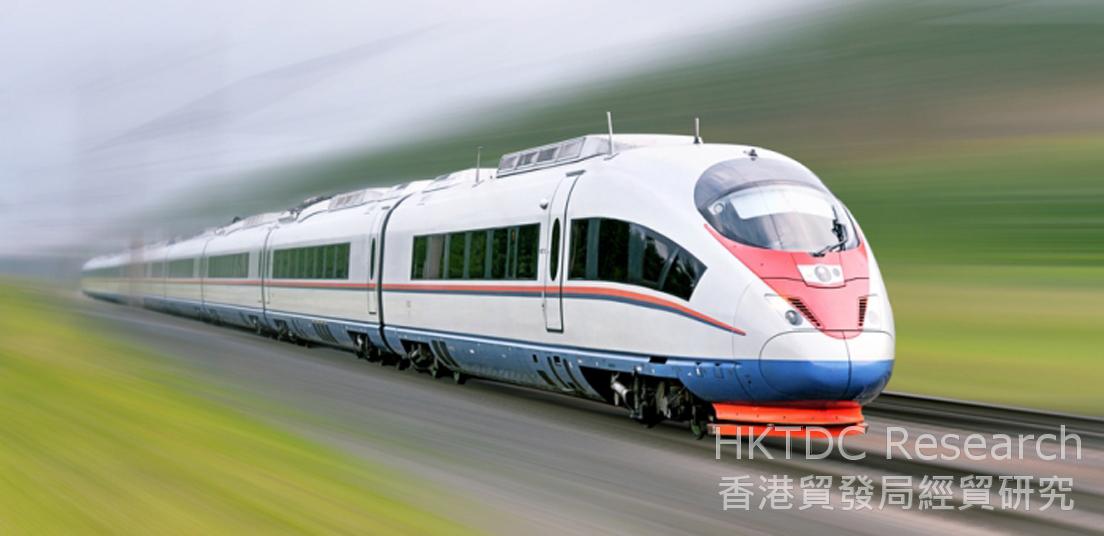Hong Kong
Hong Kong has been chosen as the Asian hub for Canadian rare resource and jewellery company Korite International Inc. The Alberta-based company controls nearly all of the world’s resources of ancient Ammonite fossils and the jewellery made from them, Ammolite. Korite’s CEO Martin Bunting said Hong Kong’s world-beating trade shows and location offer huge regional potential, with connections to the Belt and Road and Guangdong-Hong Kong-Macau Bay Area initiatives.
Speaker:
Martin Bunting, CEO, Korite International Inc
Related Links:
Hong Kong Trade Development Council
http://www.hktdc.com
HKTDC Belt and Road Portal
http://beltandroad.hktdc.com/en/



Blackpanda, a Hong Kong special risks consultancy, draws on the image of the panda to show its community development credentials. But it also aims to show “risk” as an important aspect of the Belt and Road Initiative, with cyber security a major challenge, says CEO Gene Yu. Hong Kong’s connector role is all-important to clients as the firm opens markets in Southeast Asia.
Speaker:
Gene Yu, Co-founder, CEO, Blackpanda
Related Links:
Hong Kong Trade Development Council
http://www.hktdc.com
HKTDC Belt and Road Portal
http://beltandroad.hktdc.com/en/



Hong Kong-based special risks consultancy firm Blackpanda has developed methods to reduce concerns to investors and project developers under the Belt and Road Initiative. Specialising in physical security, intelligence, community relations, cyber security and insurance, the firm has done military-style exercises to measure risks and CEO Gene Yu says Hong Kong’s safe environment and financial stature are matched by its alignment with the Belt and Road.
Speaker:
Gene Yu, Co-founder and CEO, Blackpanda
Related Links:
Hong Kong Trade Development Council
http://www.hktdc.com
HKTDC Belt and Road Portal
http://beltandroad.hktdc.com/en/



China is actively promoting economic and trade co-operation with countries and regions along the Belt and Road routes. This includes expansion of the China-Europe Railway Express (CR Express) network running between the Chinese mainland and Europe, providing express rail freight as an alternative to sea and air transport.
Since the 2011 launch of the CR Express service from Chongqing in western China to Duisburg in Germany, freight volume has risen considerably. Not only are western region Chinese manufacturers making greater use of CR Express trains to replace Europe-bound sea freight, coastal cities in the eastern region are also launching railway services, one after another.
Against this backdrop, logistics companies have begun to integrate rail freight services with sea and air networks in order to provide a more comprehensive international logistics service to clients. For example, Nippon Express (Shanghai) Co Ltd[1], a Japanese-funded company located in the Waigaoqiao Free Trade Zone, plans to provide rail freight services to Europe through the CR Express lines running from China’s coastal and inland cities. This is intended to support Nippon Express clients in capturing trade development opportunities between China and Europe, as well as the BRI. (For further details, see Leveraging CR Express to Tap “Belt and Road” Markets.)
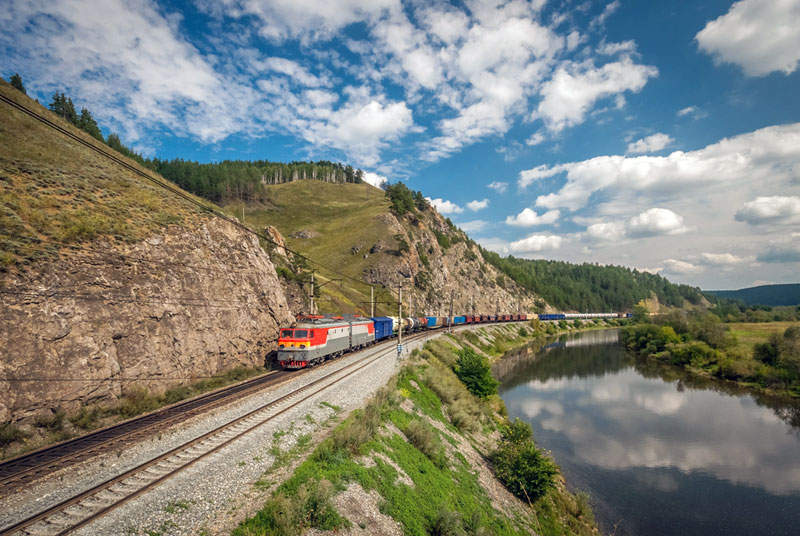
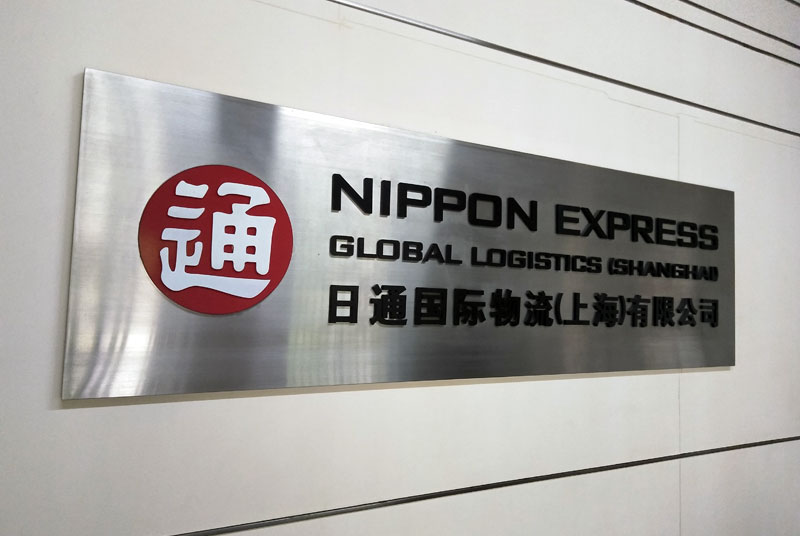
Nippon Express (Shanghai)’s parent company is Nippon Express Group (NE Group), a global logistics company, providing comprehensive logistics and supply chain management and related services. It serves the Chinese market through international transport networks in the Yangtze River Delta (YRD) and Hong Kong.
According to the NE Group, it is necessary to keep up to date with mainland economic development and trade policies. It has, therefore, actively set up logistics operating points in various bonded areas and pilot free trade zones to provide clients with faster and more convenient services through customs facilitation. The group also uses Hong Kong facilities to support the mainland network to optimise logistics. It relies on Hong Kong to handle financial dealings and investment, as well as manage its information technology for the East Asia region.
Seizing opportunities presented by the rapid development of rail freight through the CR Express network in recent years, NE Group is targeting higher-value goods from the coastal and western regions of China to Europe. As freight trains between the mainland and Asia as well as Europe are on the increase, the group plans to launch a rail freight service between Japan and Europe via the mainland in 2018, providing Japanese clients with an alternative to sea and air.
Under the current trend of industrial transformation and upgrade on the mainland, many high-tech or high-value-added enterprises have become more demanding of logistics services. For example, most electronics manufacturers require logistics providers to have specialised logistics facilities and valuables storage systems for handling higher-value goods, enabling reduced shipping time. In view of this, some logistics service providers, such as NE Group, have not only upgraded logistics facilities to meet client requirements, but have also integrated sea and air freight with the CR Express network. This takes advantage of the relatively fast service and convenient customs clearance offered by the CR Express.
At present, areas served by the CR Express network have already been expanded from the mainland’s western region to the YRD and other coastal cities. CR Express is less costly than airfreight. While not as cheap as sea transport to Europe, it is faster and therefore suitable for higher added-value and shorter life span goods. Suitable items include machinery, high-value electronics, and fast-moving consumer goods where a short delivery lead time is more important than transport costs. Undoubtedly, the CR Express would provide an additional cost-effective option to enterprises with time sensitive shipping needs.
Capitalising on China’s promotion of Belt and Road development, the NE Group has taken the lead among Japanese freight agencies, providing logistics solutions to Europe through the CR Express network since 2016. Its service area has already expanded to cover 14 mainland cities and six European cities. With an intermodal rail freight service from Shanghai or Shenzhen to Europe, it has also integrated with European transport networks to expand coverage.
NE Group has recently launched sea-rail and air-rail multi-modal freight services in Japan, Taiwan and Korea, with the CR Express network at the core. A brand-new logistics service has also been introduced, where the fastest freight transport from Japan to Germany could be completed in 23 days.
Note: For details of the company interviews conducted jointly by HKTDC Research and the Shanghai Municipal Commission of Commerce, please refer to other articles in the research series on Shanghai-Hong Kong Co-operation in Capturing Belt and Road Opportunities.
[1] Nippon Express Shanghai was interviewed jointly by HKTDC Research and the Shanghai Municipal Commission of Commerce in Q1 2018.
Editor's picks
Trending articles
Modern logistics aims at providing efficient freight services and comprehensive solutions by charting the best freight course in the light of all factors to meet the needs of clients from various industries. In respect of air freight, not only should the transportation speed and shipping cost be taken into consideration, but steps must also be taken to ensure timely delivery to client specified destinations. A customised professional air freight logistics solution is particularly important to enterprises engaged in high-value and high-tech operations with a short production process and delivery cycle.
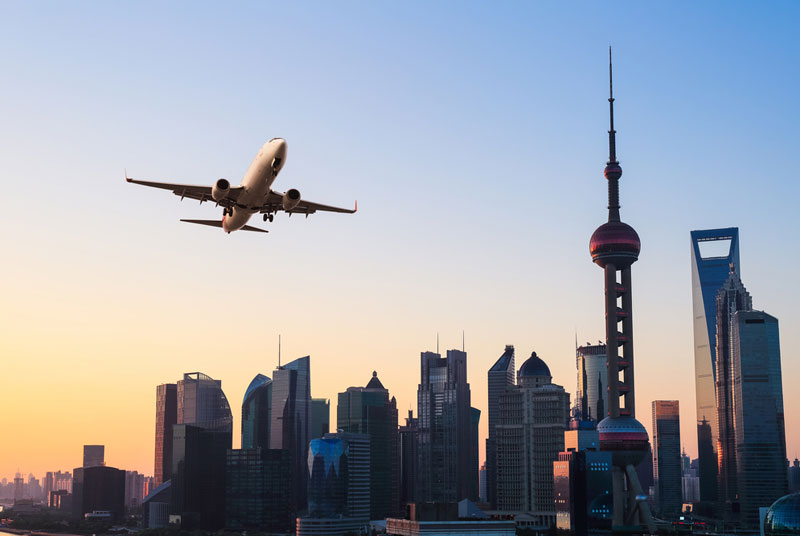
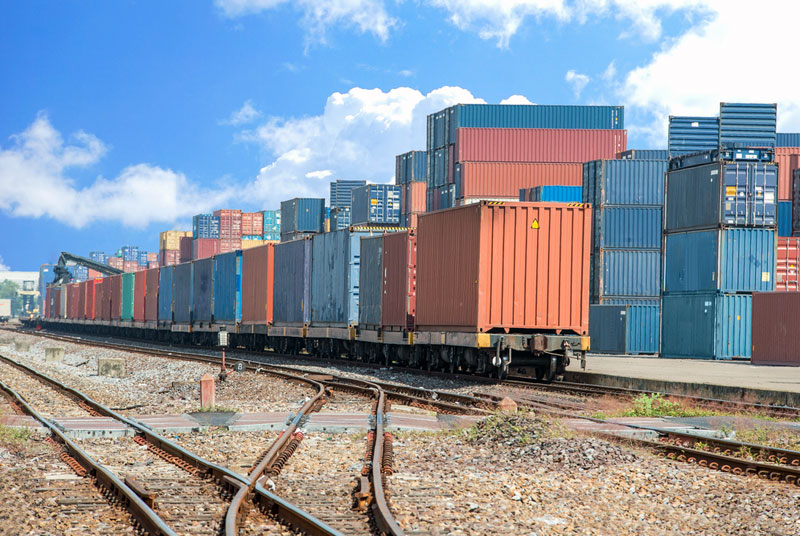
In an interview[1] with Best Loader Logistics (Shanghai) Co Ltd, its representative pointed out that logistics service providers should fully understand the specific requirements of their clients, including the cargo types, trading terms, senders’ preparation of goods and related documentation, as well as the required port arrival time. A comparison can then be made with the pricing and freight schedules of different contractors (such as shipping companies, airlines, truck companies or rail operators), as well as the port service and customs clearance process of customs declaration, inspection and quarantine at the destinations. Only upon consolidation of all factors can the best logistics solutions and contingency budgeting be drawn up for the clients to provide precise, safe, timely and cost-effective freight logistics services.
Businesses operating in the Yangtze River Delta, Pearl River Delta and other regions may come from different positions on the supply chain, and their import and export operation may involve different locations, giving rise to different logistics requirements. When logistics service providers on the mainland are to customise the freight routes and transportation modes for their clients on the basis of cost-effectiveness, they should take into account various factors. These include the characteristics of different product types, such as dangerous goods and temperature-sensitive goods, the facilitation measures of different ports, their customs clearance speed for different product types, and the convenience of local logistics and distribution services for the mainland and international markets. If service providers lacking a comprehensive network only rely on a single port for completing the customs clearance process, they can hardly provide efficient and comprehensive logistics services for a wide range of businesses on the mainland.
Take Best Loader Logistics as an example. With its headquarters set up in Hong Kong, the company is supported by a global flight information system and a comprehensive network of airlines in contract. It has operating bases in multiple locations, including Shanghai, Guangzhou, Shenzhen and Hong Kong to offer freight services by air, sea, rail and multimodal transport facilities.
Apart from providing round-the-clock global air freight import and export services with customs clearance support at Pudong International Airport in Shanghai, it also taps into the markets of Southeast Asia, India, the Middle East and other regions along the Belt and Road routes through its network in South China. It has also set up an air freight service platform for its two international trading routes serving the mainland and Hong Kong. Warehousing and supporting services are also provided in multiple areas to satisfy clients’ day-to-day logistics needs, such as the use of integrated or exclusive freight loads and the handling of specific goods that are oversize/overweight.
Note: For details of the company interviews conducted jointly by HKTDC Research and the Shanghai Municipal Commission of Commerce, please refer to other articles in the research series on Shanghai-Hong Kong Co-operation in Capturing Belt and Road Opportunities.
[1] Best Loader Logistics was interviewed jointly by HKTDC Research and the Shanghai Municipal Commission of Commerce in Q1 2018.
Editor's picks
Trending articles
The Hong Kong University of Science and Technology is playing a key research role for Belt and Road Initiative opportunities, says HKUST’s Albert Park. Co-presenting a series of market insight seminars, Professor Park says the HKUST’s Business School has a major collaboration with overseas academics while as founding member of the Asian Universities Alliance it is promoting two-way partnerships with Belt and Road countries and opportunities in Hong Kong.
Speaker:
Albert Park, Director, HKUST Institute for Emerging Market Studies
Related Links:
Hong Kong Trade Development Council
http://www.hktdc.com
HKTDC Belt and Road Portal
http://beltandroad.hktdc.com/en/



The Hong Kong University of Science and Technology (HKUST) is leading a five-year study to reduce the effects of landslides, including among China’s Belt and Road countries. HKUST’s Charles Ng says the multi-disciplinary, multinational study includes student participation in developing a world-leading standard of landslide barriers for “export” to many countries.
Speakers:
- Charles Ng, Chair Professor, Civil and Environmental Engineering, HKUST
- George Goodwin, UK Student
- Kelvin Au, Hong Kong Student
- Hengdu Liu, Chinese mainland Student
- Rafa Tasnim, Student from Bangladesh
Related Links:
Hong Kong Trade Development Council
http://www.hktdc.com
HKTDC Belt and Road Portal
http://beltandroad.hktdc.com/en/



As Belt and Road-related business opportunities continue to emerge in Southeast Asia, Lee Kee Group, a Hong Kong-based solutions provider for metals, believes demand for its products and services will continue to grow.
Lee Kee, which was set-up as a scrap metal recycling firm by Chan's great-grandfather in Hong Kong in 1947, has been widely recognised as the pioneer in the metals community. Lee Kee opened a regional office in Singapore in June 2017 to provide sales and distribution services plus technical consultancy services to new and existing clients moving into the region. "Southeast Asia is a pivot part of Belt and Road Initiative," noted Clara Chan, Lee Kee's CEO and the fourth-generation family member to head the 70-year-old company. "We have been serving the Southeast Asia market for many years. In the last few years, we witnessed the rapid growth of manufacturing activities in the region. An office in Singapore enables us to cater the needs of new and existing customers better while keeping us abreast of the regional development to grasp upcoming opportunities," Chan said.
Chan said the Belt and Road Initiative came along at time when Hong Kong’s businesses were looking for new opportunities. With Southeast Asia as one of the primary focus regions of the Initiative, a notable number of mainland manufacturers had been moving to the region to take advantage of close proximity to these emerging markets while participating in Belt and Road-related infrastructure and associated projects. Lower labour cost is also a driving force. "Manufacturing cost in the Chinese mainland is escalating and the manufacturing industry is undergoing transformation. A lot of mainland manufacturers are moving their traditional manufacturing capacity to Southeast Asia. Wherever they are, the need of reliable metals is the same, and we support our customers whenever, wherever they need us," Chan explained. Lee Kee offers a broad portfolio of metals including zinc, aluminium, nickel, copper as well as zinc alloy, aluminium alloy, stainless steel and electroplating chemicals. "We create value not only by providing standard alloys but offering our customers custom-made alloys that best suit their design and product needs," Chan said.
On the other hand, Southeast Asian companies are increasing their demand for professional services that Lee Kee offers. In addition to producing and distributing metals, Lee Kee's businesses activities include quality assurance, testing and technical consultancy services. Its laboratory was the first in Hong Kong accredited in the Metals and Metallic Alloys category by The Hong Kong Laboratory Accreditation Scheme (HOKLAS) and is an approved LME Listed Sampler and Assayer (LSA). The company’s customers span across more than 20 sectors ranging from automobiles to toys to household hardware items and fashion accessories. "By working closely with our customers on improving their defect rate and enhancing their productivity, we help our customers to be more competitive. This is how we ensure that Lee Kee is their partner of choice," added Chan. There is no doubt that newly-established manufacturing enterprises would appreciate any insights that would help them upgrade their operation and build quality products efficiently.
Chan believed Hong Kong's extensive international business and cultural connections, its use of English and Chinese and its sophisticated financial and legal systems provided the city with a competitive edge as a facilitator for Belt and Road projects. Besides, Hong Kong businessmen are agile, innovative and proactive. Chan gave an example of her setting up Lee Kee's brokerage services in Hong Kong. The extension of Lee Kee’s scope of services was considered a bold move by many in the metals community yet it was a testament to Hong Kong's strength and reputation as an international finance centre. "We differentiate ourselves by providing a platform for our customers that covers their risk exposure to products, raw materials and pricing," Chan explained. She said the rigorous regulations and compliance rules Hong Kong implements provide brokerage customers with confidence.
As CEO, Chan led the family business to its successfully listing on the Hong Kong Stock Exchange in 2006. She also ensured that Lee Kee secured its position among the world's premier metal players by becoming a member of the London Metal Exchange (LME). "Being a LME member enables us to share China’s metals market situation on an international platform to enhance mutual understanding and communication," Chan said. She added that membership of the exclusive industry body provides an endorsement of its international-standard operations and management system which she found valuable when the corporation entered a new regional market.
Furthermore, she believed the far-reaching scope of the Belt and Road Initiative provided a prime opportunity for young Hong Kong people to widen their horizons by learning about different cultures and the various ways business are conducted across the Belt and Road countries. "The Initiative will provide invaluable learning opportunities and it is important for young people to approach opportunities with an open mind-set," Chan said.




In tandem with China’s increasing economic activity abroad, mainland enterprises are devoting greater efforts to developing their business worldwide. As well as expanding into international markets through trade and strengthening offshore sourcing to support production at home, many are also making outward direct investment (ODI) in developed economies in Europe and America. Some are seeking investment opportunities in Asian and African countries under the Belt and Road Initiative, in the hope of tapping the potential of these markets or utilising local resources to enhance their production capacity.
But investors are reminded that the support services required in making outward investment and conducting offshore trade are not exactly the same. Investors must acquire an in-depth understanding of the business environment of their investment destinations in order to ensure that their investment projects can be implemented smoothly. The rudimentary legal systems in some Belt and Road countries can create extra risks for investment. Hong Kong’s legal professionals, with their familiarity with overseas legal environments and business cultures, and their access to global resources through their extensive networks, are in an excellent position to provide due diligence services for mainland investors and help them control risks.
Private Enterprises Become Major ODI Players
Nowadays, a large number of private enterprises in China with financial clout are aggressively tapping into international markets and accelerating their offshore investment, in order to make better use of overseas resources and promote the sustainable development of their business. As a result, private enterprises are gradually replacing state-owned enterprises (SOEs) as China’s major ODI players. According to Ministry of Commerce figures, investment from non-SOEs (including private enterprises and joint-stock companies) rose from 19% of China’s non-financial ODI at the end of 2006 to 45.7% at the end of 2016. In 2016 alone, almost 70% of non-financial ODI came from these non-public sector investors[1]. In spite of this, there are still many mainland enterprises which find themselves lacking information on offshore investment, unfamiliar with the business environment in Belt and Road countries, and in dire need of professional services to help them expand their business abroad.

In an interview[2], Wang Xiaogang, Partner of King & Wood Mallesons, said: “China’s foreign trade is booming, and many mainland enterprises have been conducting international trade through Shanghai and Hong Kong. They use Hong Kong as a platform to handle business payments and receipts in foreign currencies, and take advantage of the innovative financial policy piloted in the Shanghai Free Trade Zone to move funds in foreign currencies or renminbi in a bid to raise financial and operational efficiency. They have thus become very skillful in trade operations. However, as enterprises make further ODI, relying on trade experience alone can no longer meet their business needs. In addition to considering issues such as business prospects and project financing of the investment concerned, they must also take note of the laws and regulations, tax policy and business environment of their investment destinations. Yet many investors are faced with the problems of insufficient information, language and cultural barriers, as well as a lack of understanding of the business practices of foreign countries, which have directly increased their risks of making offshore investment.”
He added: “Before going ahead with their investment, enterprises should assess different aspects of the project concerned. For instance, if they intend to set up production plants, transit warehouses or distribution facilities overseas, they must gain a good understanding of the business environment, labour policy and environmental requirements in the investment destination before they can identify risks and devise the necessary measures to ensure the smooth implementation of the investment project. Even in a case as simple as establishing a company in Hong Kong, they must first learn about Hong Kong’s immigration policy in order to make arrangements for management staff to come to Hong Kong. They must also have a clear understanding of Hong Kong’s tax policy so as to meet the necessary legal requirements and enjoy the relevant benefits. For example, in the Policy Address delivered by the Chief Executive of the Hong Kong SAR in October 2017, it was announced that the profits tax rate for the first HK$2 million of profits made by Hong Kong companies would be reduced from the current 16.5% to 8.25%, and that eligible R&D expenditure is entitled to 200-300% tax deduction[3]. Moreover, mainland enterprises can use the Hong Kong service platform to carry out tax planning for their international business and avoid unnecessary tax burdens.”
Professional Services Can Help Reduce M&A Risks
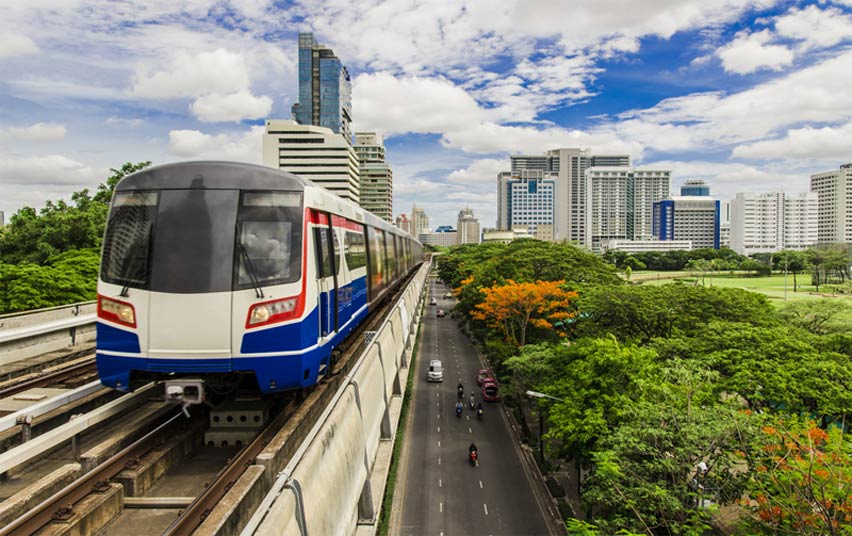
Mainland enterprises have also been very active in conducting merger and acquisition (M&A) overseas in recent years. Official statistics on foreign investment show that, in 2016, ODI in M&A by Chinese enterprises involved a total of 765 projects in 74 countries and regions. The amount of ODI in M&A projects reached US$86.5 billion, accounting for 44.1% of China’s total ODI in that year. At the same time, project financing funds worth US$48.8 billion were raised overseas, accounting for 36.1% of the M&A amount involved. These foreign M&A projects mainly covered manufacturing, information transmission, software and information technology services, transportation, warehousing and postal services, and power, heat, gas and water generation and supply[4].
Wang said: “The complexity of conducting M&A overseas is no less than that of making general direct investment. Apart from the above-mentioned risk management measures, investors must also have an in-depth understanding of actual conditions such as the equity, financial profile and assets of the M&A project. Investing in Belt and Road countries, especially in less popular destinations, can incur higher transaction risks since some countries may not have a sound legal system and their business practices may not align with international practices. Mainland investors are in great need of professional services to handle these problems. Hong Kong’s legal practitioners have extensive international networks and benefit from Hong Kong’s free flow of information. They can effectively lead professional teams from all over the world to carry out due diligence investigations for mainland enterprises’ investment projects, identifying and assessing problems in order to control investment risks.”
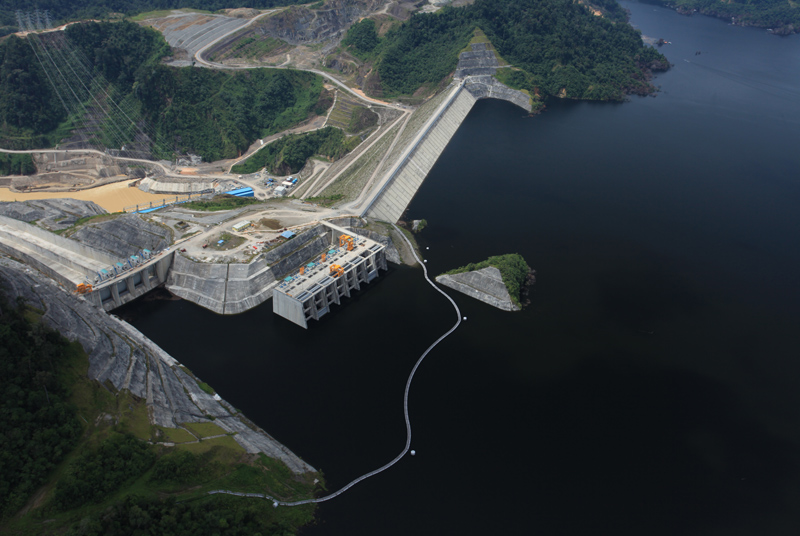
Asia-based King & Wood Mallesons is regarded as one of the most innovative law firms in the world. Currently, the firm has a team of over 2,000 legal professionals in 27 cities around the globe. It has set up offices in 11 mainland cities as well as in Hong Kong to help clients understand the business and investment environment in various countries and regions, and offer them the right solutions. King & Wood Mallesons’ Hong Kong office provides a comprehensive range of legal services to multinational corporations, investment banks, mainland enterprises and local clients. Using its lawyers’ professional knowledge and rich experience in the Asian market, King & Wood Mallesons also provides clients with professional services on cross-border transactions.
Note: For details of the company interviews conducted jointly by HKTDC Research and the Shanghai Municipal Commission of Commerce, please refer to other articles in the research series on Shanghai-Hong Kong Co-operation in Capturing Belt and Road Opportunities.
[1] Source: Statistical Bulletin of China's Outward Foreign Direct Investment 2016
[2] Representatives of HKTDC Research and Shanghai Municipal Commission of Commerce jointly conducted an interview with King & Wood Mallesons (Hong Kong office) in the fourth quarter of 2017.
[3] For details, please refer to The Chief Executive’s 2017 Policy Address, The Hong Kong SAR of the People’s Republic of China.
[4] Source: Statistical Bulletin of China's Outward Foreign Direct Investment 2016
Editor's picks
Trending articles
To keep up with globalisation and regional economic integration, while meeting the needs stemming from urbanisation and other socio-economic developments, countries all over the world are implementing a variety of infrastructure construction projects. They hope these projects will make their transportation, freight forwarding and logistics services more efficient, and improve services like energy supply, telecommunications and environmental facilities. According to the latest estimates made by the Organisation of Economic Co-operation and Development (OECD), on average about US$6.9 trillion is needed to invest annually in infrastructure projects around the globe between 2016 and 2030 to support sustainable economic development[1]. A report compiled by the Asian Development Bank says that an annual average of about US$1.7 trillion would be needed to invest in infrastructure during the same period in developing Asian countries alone, in order to satisfy the region’s huge demand for infrastructural facilities including transportation[2]. The past few years have seen a marked increase in mainland Chinese enterprises investing in or subcontracting overseas infrastructure projects under the Belt and Road Initiative. This increase is bound to fuel a rise in demand for related professional services from mainland enterprises, generating opportunities for Hong Kong service providers.
Financial Planning for Infrastructure Projects
China is not only among the world’s leading destinations for foreign direct investment (FDI), it is also its second largest source of outward direct investment (ODI). In 2016, the value of China’s ODI (US$196.1 billion) exceeded that of its inward FDI (US$134 billion). It also did so in 2015, making the country a net capital exporter for two consecutive years[3]. At the same time, the focus of China’s investment activities overseas has been gradually shifting from energy and natural resources to a diverse mix of sectors. According to figures released by the Ministry of Commerce, as at the end of 2016, the sectors which had received more than US$10 billion of ODI from China included leasing and commercial services, finance, wholesale and retail, mining, manufacturing, and information transmission/technology services, as well as infrastructure or related industries such as real estate, transportation/warehousing and postal services, construction industry, and power/heat/gas/water generation and supply. In recent years, China’s outward investment has also become more concerned with the merger and acquisition (M&A) of infrastructure projects. One example of this is the amount of investment in M&A projects involving transportation and power/heat generation and supply, which reached US$25 billion in 2016, about 19% of China’s total ODI in M&A that year.
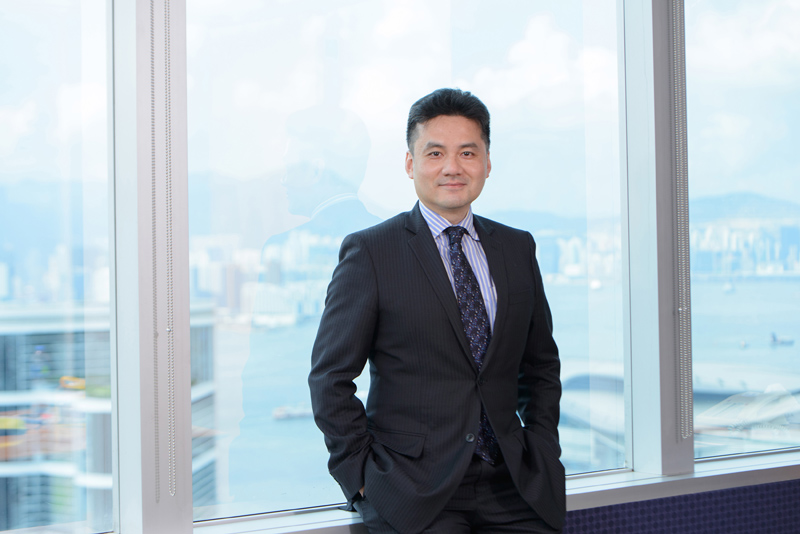
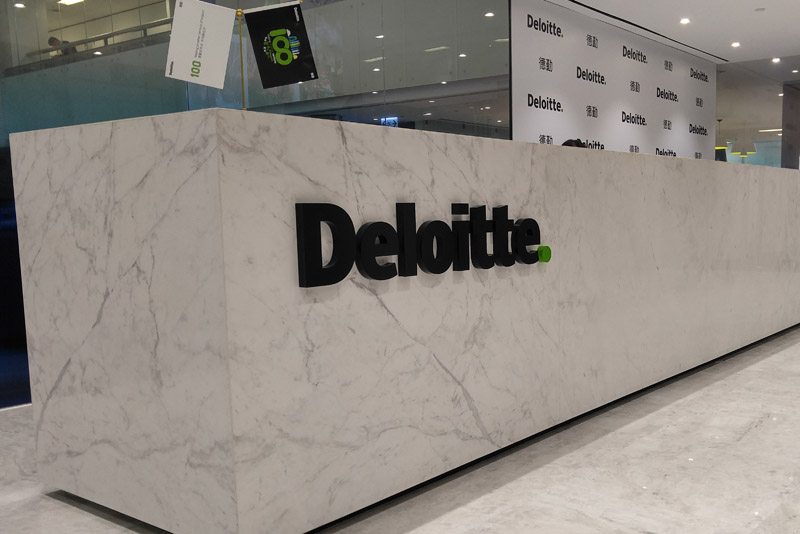
In an interview[4], Patrick W Yip, National M&A Leader and Partner (Tax & Business Advisory Services) of Deloitte China said: “Like [investment in] industries such as manufacturing or retail, investment in infrastructure projects overseas, including expressways, bridges, railways and power plants, also requires professional services such as financial, legal and accounting services, in order to ensure the sustainable development of these investment projects. However, the nature of investment in infrastructure projects is different to that in general projects, and the scope of the services required is also different. For instance, when mainland enterprises invest in M&A of technological projects overseas, the return on investment and depreciation period of the technology and equipment concerned will probably take about three years or so, whereas investment in infrastructure can easily take five or 10 years and the payback period often takes decades or more. In light of this, long-term development plans are required. The planning not only involves macro factors such as forecasts about the medium- to long-term economic and industrial growth of the country and region concerned, but also takes into consideration changes in urban development or the changing demand of facilities users as time goes by, as well as other external factors. Hence, contingency plans or measures must be formulated in the initial stage of the infrastructure investment plan in order to cope with changing environment and raise the flexibility of the investment.”

“Also, while currently most mainland enterprises are not short of capital sources, in light of the longer investment period and more uncertainty factors, the enterprises concerned would need to formulate the right financial solutions. For instance, they can take advantage of the Hong Kong service platform to bring a number of investors together in a consortium to participate in the investment projects, while utilising different channels to arrange for appropriate financing methods or syndicated loans in a bid to alleviate investment risks by increasing the number of stakeholders.”
Using Effective Networks to Conduct Due Diligence
Encouraged by the Belt and Road Initiative, mainland enterprises are increasing direct investment activities in countries along the Belt and Road. Investment in infrastructure, including roads, marine transport, aviation, energy, and communication projects, has become one of the key areas for mainland enterprises exploring Belt and Road opportunities.
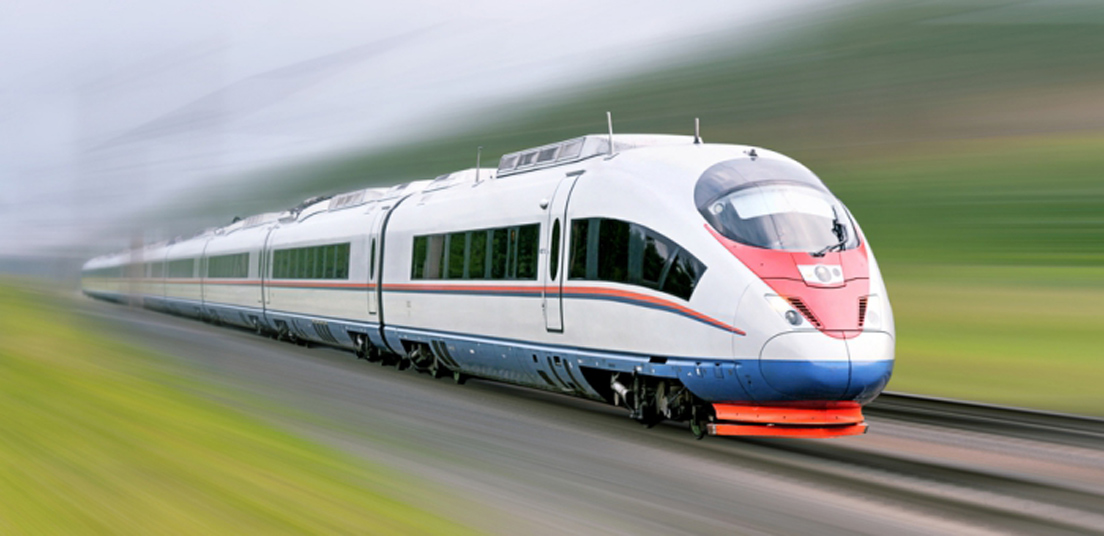
However, Yip warned: “It is more important for mainland enterprises investing in infrastructure and other facilities along the Belt and Road to conduct effective due diligence, than it is when investing in developed economies. In some of the Belt and Road countries which are not popular FDI destinations, the legal systems and commercial regulations are far from advanced and their foreign investment policies may change as time goes by or with a change of government, which will directly increase the risks for investors. In fact, infrastructure projects may bring about far-reaching impacts on the economic and social development of the investment destination. Some projects may also involve land acquisition, environmental planning and environmental protection which could affect a great number of stakeholders. All these elements would have an impact on the feasibility or future development of the projects.”
“In view of this, mainland investors are in dire need of effective professional services in conducting due diligence in the initial stage of their investment plan, to identify various factors that may affect the project and thus exercise effective risk control. Hong Kong industry players, who have rich international experience and extensive international networks, can act as the service leaders to support mainland investors’ infrastructure projects overseas, co-ordinating service teams in different regions to collect the necessary information and make assessments. This, coupled with the comprehensive range of professional services available in Hong Kong, gives them an edge in carrying out effective due diligence on Belt and Road projects for clients.”
Deloitte is one of the world’s Big Four accounting firms. It provides audit and assurance, tax, management consulting, risk and financial advisory and related services for clients around the globe. Deloitte China is a member firm of Deloitte set up in China, with 21 offices across the country and a team of 13,000 professionals. Its offices in Hong Kong, Shanghai, Beijing and Chongqing are its four major operating arms. Deloitte China is also a Partner of the Infrastructure Financing Facilitation Office (IFFO) set up under the leadership of the Hong Kong Monetary Authority. IFFO aims to pool together major stakeholders to jointly promote infrastructure investment and financing activities under the Belt and Road Initiative.
Note: For details of the company interviews conducted jointly by HKTDC Research and the Shanghai Municipal Commission of Commerce, please refer to other articles in the research series on Shanghai-Hong Kong Co-operation in Capturing Belt and Road Opportunities.
[1] (1) Including the amount of investment needed to achieve climate-compatible growth; (2) Source: Investing in Climate, Investing in Growth, OECD, 2017
[2] Source: Meeting Asia’s Infrastructure Needs, Asian Development Bank, 2017
[3] Source: Statistical Bulletin of China's Outward Foreign Direct Investment 2016
[4] Representatives of HKTDC Research and Shanghai Municipal Commission of Commerce jointly conducted an interview with Deloitte China in the fourth quarter of 2017.
 365 Views
365 Views